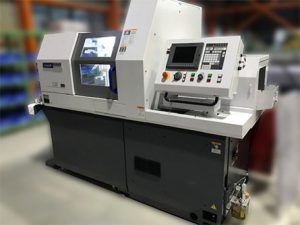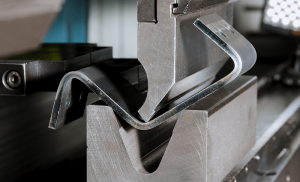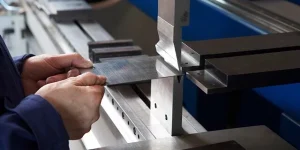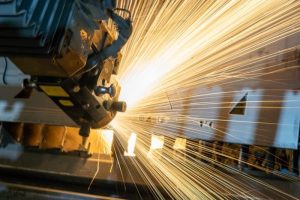CNC machines vary in type and application. Mills operate at speeds up to 50,000 rpm for precision cutting. Lathes excel in symmetric parts production. Plasma cutters slice through steel at 200 inches per minute. EDMs create intricate designs with electrical sparks, while water jet cutters use high-pressure streams to cut various materials without heat distortion.
CNC Mills
**CNC Mills** One of the most revolutionary uses of technology in manufacturing, CNC mills are essential to creating advanced, complex components with the highest level of precision and efficiency. The technology features machines able to implement the necessary steps after receiving digital instructions and move along various axes to carve, drill, and shape metal, plastic, or wood with extreme accuracy. However, such machinery might have a range in size, although CNC mills are generally small, which aids proficiency because of less potential for vibration or displacement. Along with size variance, spindle speeds are characteristic of CNC mills and might range from 1,000 to 10,000 rpm, or up to 50,000 rpm as the most advanced models.
Thus, manufacturers can optimize the choice of a specific mill based on the nature and scale of the project. A small CNC mill can potentially take as long as four hours to shape a particularly complex piece that can be made by a larger and more powerful machine in less than an hour. Naturally, what materials can be milled determine not only the application of the finished product, but also the specifics of the project details and the components. For example, automobile manufacturers use such machinery to create engine parts with the required tolerances and complexity that is too time-consuming or impossible to achieve manually.
Therefore, optimum engine performance and durability directly depend on the appropriate CNC milling. Parallel to the example provided, CNC mills are useful in space creation because of the ability to shape aluminum, titanium, and tough superalloys like Inconel in the way that allows reducing the weight of the part while maintaining strength. Such diversity in the range of materials is possible to process because of the solid construction of CNC mills and the smartly adaptive software that can be tailored to specific characteristics of the materials. Naturally, high efficiency, accuracy, and applicability to a wide range of tasks make such technology relatively pricy. The lower-end machines cost around $20,000 and such price might exceed $150,000 for high-end mills. Nonetheless, the machinery pays off in the long run because of decreased costs of labor, reduced waste material, and improved product design.
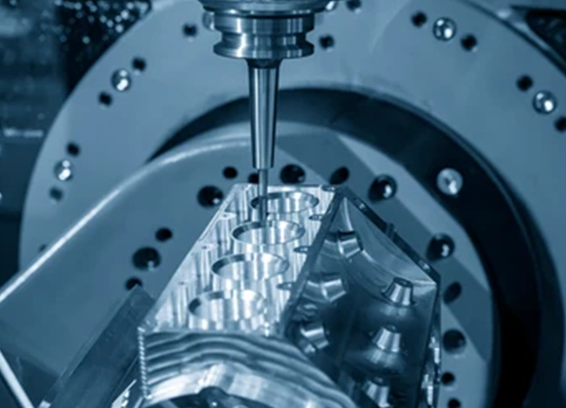
Lathes
CNC lathes are one of the most fundamental tools in the machining world, as they allow for the precise and efficient turning of materials and the creation of an object such as a straight piece with circular symmetry around an axis. They are used across a wide range of industries, including aerospace, automotive, and manufacturing, and are often used on a large scale to turn raw materials like metal rods into finished parts by cutting away excess material on a large quantity of parts. The first significant advantage of using a CNC lathe is the unparalleled accuracy it can maintain.
In the case of the production of automotive shafts, for example, the tolerance can be as tight as 0.0005 inches, which a CNC lathe is able to consistently reach. This is vital to the production of parts that must fit together perfectly and neatly fit into a large assembly, such as an engine or a transmission. The speed of a CNC lathe is also a very important factor. One workpiece could require multiple operations and manual adjustments on a manual lathe that might not be necessary on a CNC lathe, so the CNC lathe can produce more work at a faster rate. In addition to that, the actual turning operation is much faster than many people can turn something by hand, and the spindle can operate at a range of speeds that the machinist can control depending on the required finish and the type of material used.
Modern CNC lathes can reach spindle speeds of up to 10,000 rpm, enabling much faster times to produce each part. Cost is also an extremely important factor in the choice of a CNC lathe. The initial price of a CNC lathe will typically vary between $30,000 for a relatively simple one and $300,000 for a more complex machine with extra additions. The cost to operating such a machine can also vary between $65,000 and $90,000, although in many cases, these costs are quickly be recouped by the reduction in labor and increased amounts of parts that can be produced.
The final very important benefit of a CNC lathe is the fact that the machines are extremely durable, and with proper maintenance and regular re-calibration, can last for many decades, meaning that they are a lasting investment for any sort of manufacture process.
Plasma Cutters
CNC plasma cutters have become indispensable in the metalworking industry. They can be used to make precision cuts in a variety of metal materials, from steel to stainless steel to aluminum. CNC plasma cutters are efficient and fast. They make use of the properties of plasma torches. A CNC plasma cutter works by passing a stream of pressurized plasma gas through a narrow nozzle. Electricity is used to create an electric circuit between the workpiece and the nozzle. The plasma arc melts the metal and an air jet blows it away. First and most importantly, CNC plasma cutters are faster than manual cutting or processing with a saw.
As one can guess from the name, CNC plasma cutters work in automated mode. A CNC plasma cutter can cut a plate of half-inch thick steel at around 200 inches per minute. This rate of fabrication is nearly unattainable with sawing. Delays in fabrication grants imposed by mechanical cutting technologies can be disastrous, especially in construction or shipbuilding. Second, CNC plasma cutters are precise and create almost no waste. When working to develop specific and complex metalwork patterns, one can see that a CNC plasma cutter fabricates a product with no more than 6 inches by 6 inches scrap.
While waste does not typically sound expensive, waste metals and materials can become part of the production cost. For industries, where metal and other materials account for the major share of production expenses, the almost complete absence of such waste is a god-sent. Meanwhile, on the cost part, we should note that handheld systems can start at nearly $1,500, while more heavy-duty equipment for industrial application can easily exceed $30,000.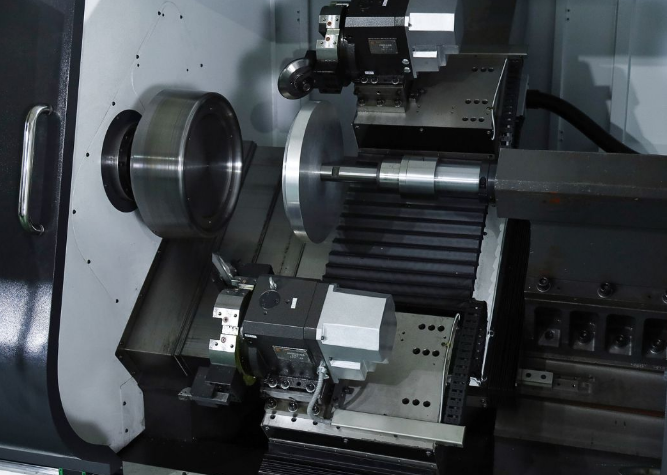
Electric Discharge Machines (EDM)
Electric Discharge Machines , or spark machining, play a significant role in modern manufacturing and are primarily used for producing complex molds, dies and high precision parts. The machines work through the use of electrical discharges or sparks to shape a work-piece, which makes them great for materials that are difficult to machine with traditional methods. For a number of reasons, EDM is particularly advantageous to applications with complex or hard materials, such as titanium, hastelloy, kovar and inconel . In the aerospace industry, EDM is essential for producing precise parts that fit into the limited space inside the aircraft and have to be made from materials that can resist high stresses.
Finally, the details that EDM technology is capable of inducing are often impractical or impossible with conventional machining. For example, with the proper electrode, an EDM machine could produce small slots and holes – less than.002” in diameter – and be absolutely certain of the final part’s lack of defects. Of course, this sort of precision comes at a cost, both in terms of the financial outlay and the time required for production. However, the cost of an EDM machine can, and is, justified by the machine’s life time and the savings from its use. An EDM machine typically costs between $50,000 and $150,000 and beyond, depending on its brand and capabilities.
Even the more expensive models pay back their price in the saved time, eliminated material waste and lowered number of setups and necessary machines to deliver required geometries. Although EDM is slower than some of the rapid machining techniques, EDM machines produce parts of the highest quality that does not require finishing, including the adjustment of dimensions or the surface quality. In applications such as tool and die making that require the highest degree of craftsmanship in order to ensure exact dimensions and perfect surface finish, a single EDM machine can easily complete the tasks that would require half a dozen conventional ones.
Water Jet Cutters
Water jet cutters are an essential part of the family of CNC machines, used to cut a wide range of materials using a high-pressure water stream, sometimes mixed with abrasives. Such cutters are invaluable for being a versatile tool that allows for cutting a number of materials while keeping them unheated. A special application of such a tool is cutting materials that cannot survive high temperatures, such as plastics, textiles, or aluminum.
For the aerospace industry, cutting composite materials using a water jet stream to avoid the destruction of the new features introduced into a material is common practice. The precision of cutting is comparable to more traditional machine tools, but without the tendency for the cutting edge to wear down. As such, I would claim that the precision is up to 1/1000 of inch deflection, with the standard tolerances in the industry set at ±0.5 mm or ±0.020 inches for most sizes.
In terms of operating costs, electricity consumption costs between $4 and $25 per hour. Similarly, the costs associated with maintenance are roughly equivalent to $20,000-$30,000 per year. The abrasive costs depend on the type of an abrasive cutting tool, along with the cutting tool itself and the material being cut, which controls the costs of manufacturing a single part.




